How to personalize your website for different buyers with Clearbit and Mutiny

With reduced budget and headcount, marketers need to do more with less. Website personalization is a scalable way to increase conversions by customizing various aspects of your website for different audiences. You can build a more personalized experience by changing CTAs, copy, or customer logos based on who’s visiting your website.
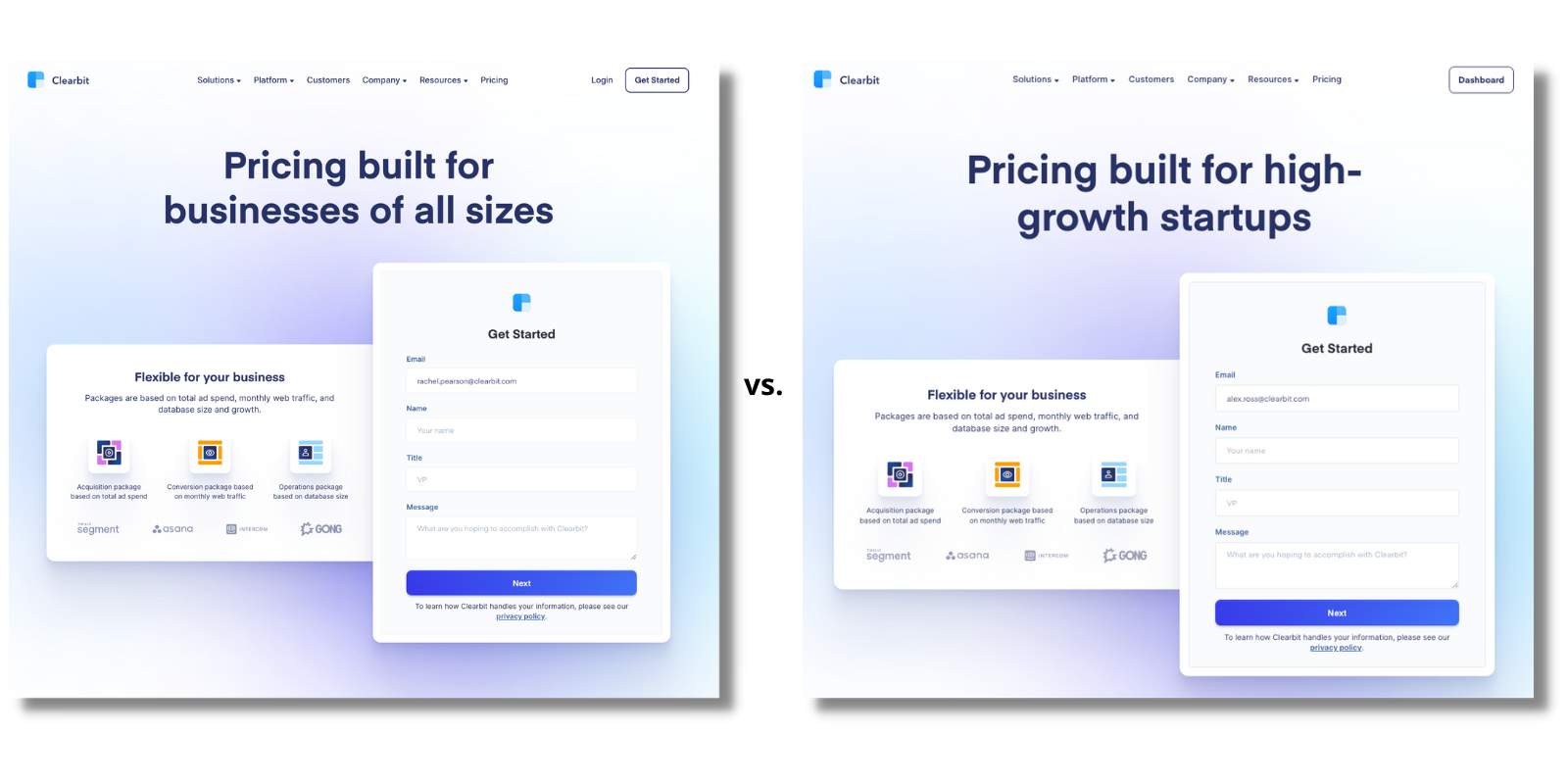
Supporting multiple funnels with website personalization
According to VentureBeat, 58% of SaaS-based subscription companies have a Product-led Growth (PLG) strategy in place, and 91% plan to increase their investment in PLG. With PLG’s rise in popularity, many companies today have both a self-serve and sales-assisted motion. Having two go-to-market motions means managing multiple offers, typically a free trial and a demo.
Oftentimes, these two go-to-market motions compete with one another, each taking up valuable website real estate and requiring buyers to choose the best option. This often leads to lost revenue and a less-than-ideal buyer experience. For example, showing lower pricing tiers and a free trial option to an enterprise organization is a missed opportunity to have a more consultative sales conversation and sell at a higher annual contract value (ACV).
Thibaut Davoult, Head of Growth at Livestorm, says, “This is a really common issue for product-led companies. You have a self-serve plan that is competing with the sales-enabled plan. We wanted to prevent that, and the solution we found was using Clearbit Reveal.”
A successful website personalization strategy enables companies with multiple go-to-market motions to drive conversions by showing the right content to the right people at the right time.
How to convert both SMB and enterprise companies with Clearbit and Mutiny
1. Build your audiences based on SMB and enterprise criteria
Using Clearbit Reveal, Clearbit’s extensive dataset of firmographic attributes, and Mutiny’s audience builder, you can identify accounts visiting your site and segment companies within your Ideal Customer Profile (ICP).
To build personalized journeys for your self-serve and sales-assisted funnels, you might consider the following Clearbit attributes:
- Number of employees: The number of employees at a company
- Funding raised: The total amount of funding raised by a company
Using these firmographic traits, you can start to build two distinct audiences – SMB and enterprise. For example, you can build an SMB audience with 11-50 and 51-250 employees and less than $10M in funding (example shown below). This group is likely a good fit for your self-serve motion.
Then, you can build a second audience to identify enterprise companies. You can use parameters like employee size is 1k - 5k and look for companies that have raised over $50M in funding. This group likely has more budget and resources and may be a better fit for your sales-assisted funnel.
Once you build these segments you’ll be able to see how large the audience size is and how long you will need to run your personalization test to generate statistically significant results.
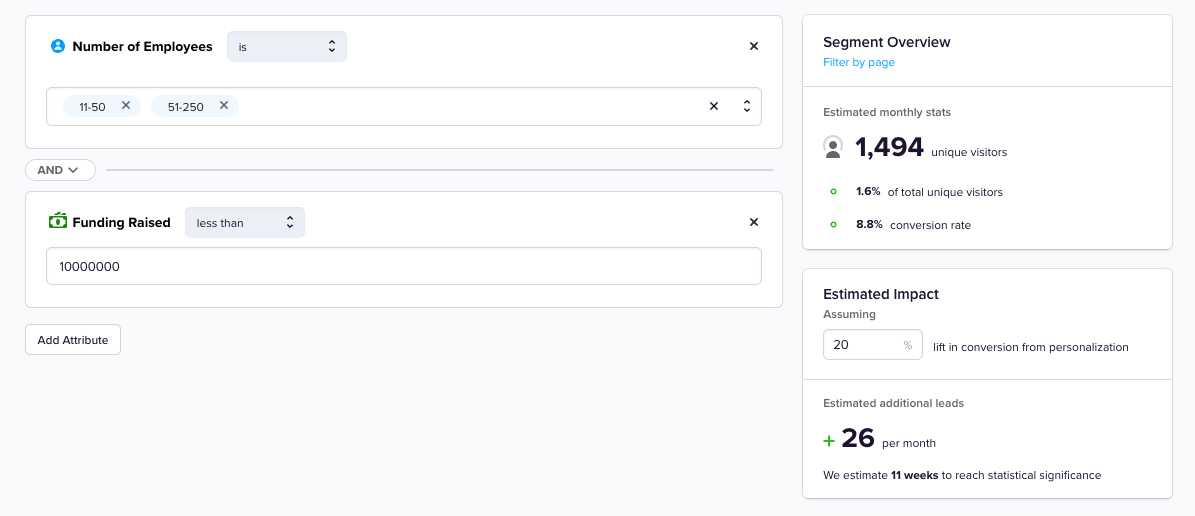
2. Personalize the website experience for your SMB and enterprise audiences
Next, activate your ICP sub-segments with custom experiences. With your audiences clearly defined, it’s time to create custom journeys for each group. Using Mutiny, it is easy for marketers to design unique website experiences without any code.
Here are suggestions for a few website changes you can make to speak to the needs of your SMB and enterprise audiences.
- Tailored logos: Display different customer logos based on the company size of your website visitor. The SMB audience should see logos of smaller customers, while the enterprise customers should see logos of larger corporations.
- Copy changes: Make sure the copy accurately reflects the segment. In the example below, the SMB experience has tailored copy that reads “website software built for startups.” If you work for a small or medium-sized business and land on a website that speaks directly to your company, aren’t you more likely to convert?
- CTA changes: Ensure the offer matches the audience. In this example, the SMB audience should see the free trial offer and enterprise companies should be offered a demo or an opportunity to speak with sales.
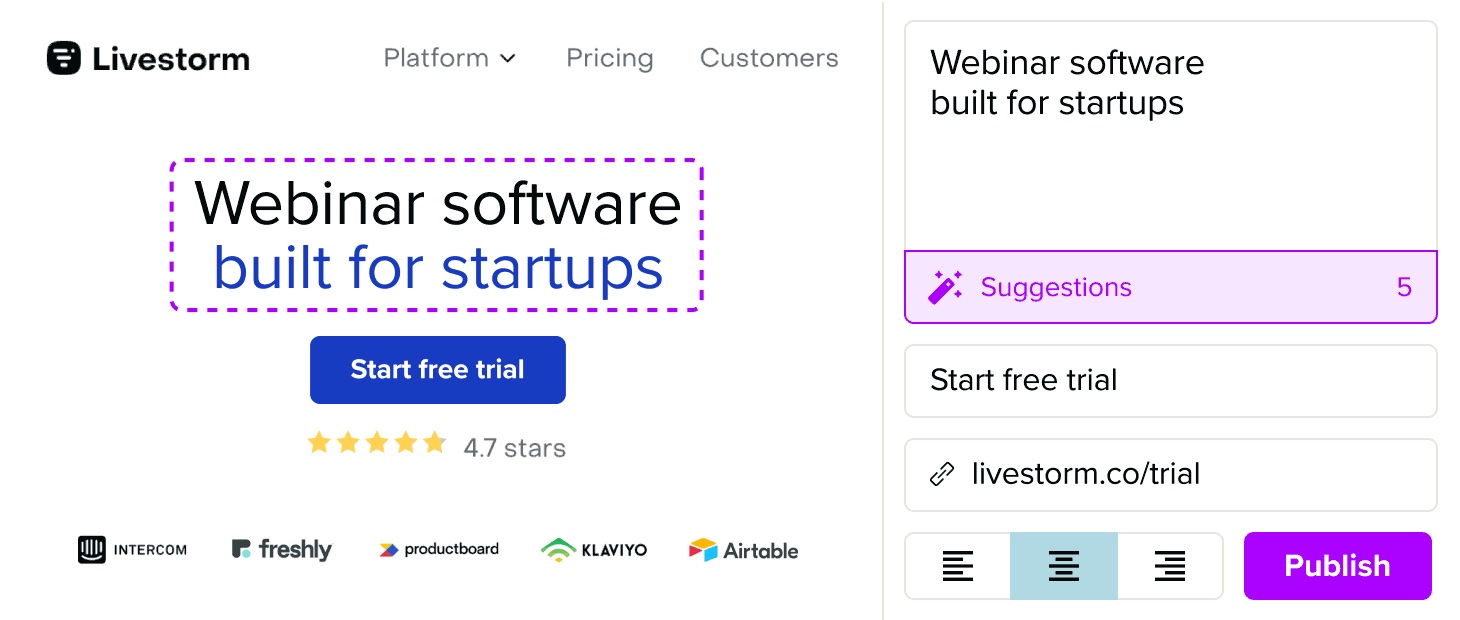
3. Measure and iterate
Like most strategies in marketing, website personalization isn’t something you set and forget. Once your personalization test has reached statistically significant results, you will want to review the lift in conversions to understand how the variant performed compared to the control. In the graphic below, you can see conversion data displayed in Mutiny.
You can also look at more down-funnel metrics like opportunities created and pipeline generated, but conversions speak the most directly to the impact of personalization tests.
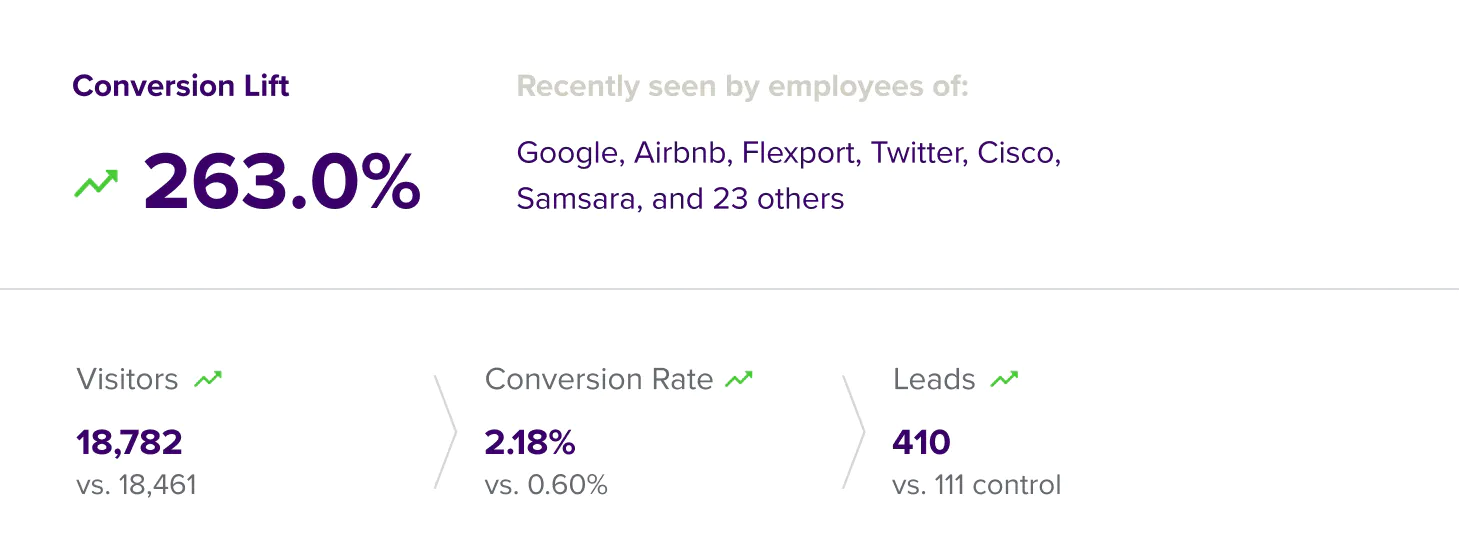
With this roadmap in place, you’re well on your way to driving more conversions.
How Livestorm drives a higher ACV with enterprise companies
Livestorm is one of the many companies with both a self-serve and sales-assisted funnel. Thibaut Davoult, Head of Growth at Livestorm, noticed that enterprise companies were coming to the website and signing up for lower-cost plans. He and his team saw an opportunity to increase ACV by personalizing the website specifically for enterprise companies (defined by over 10,000 employees).
Using Clearbit Reveal and Clearbit’s firmographic dataset, the Livestorm team identifies accounts that match their ICP and buckets them into different audiences based on employee size. The team then uses Mutiny to create custom experiences for each audience.
For their enterprise audience specifically, the team changes the logos and copy, displaying relevant customers and content. Thibaut and his team also highlight the demo offer over the free trial offer. Pricing is hidden from the website for their enterprise audience, enabling sales to have more consultative conversations and sell at a higher price.
Here’s what the enterprise experience looks like on Livestorm’s site.
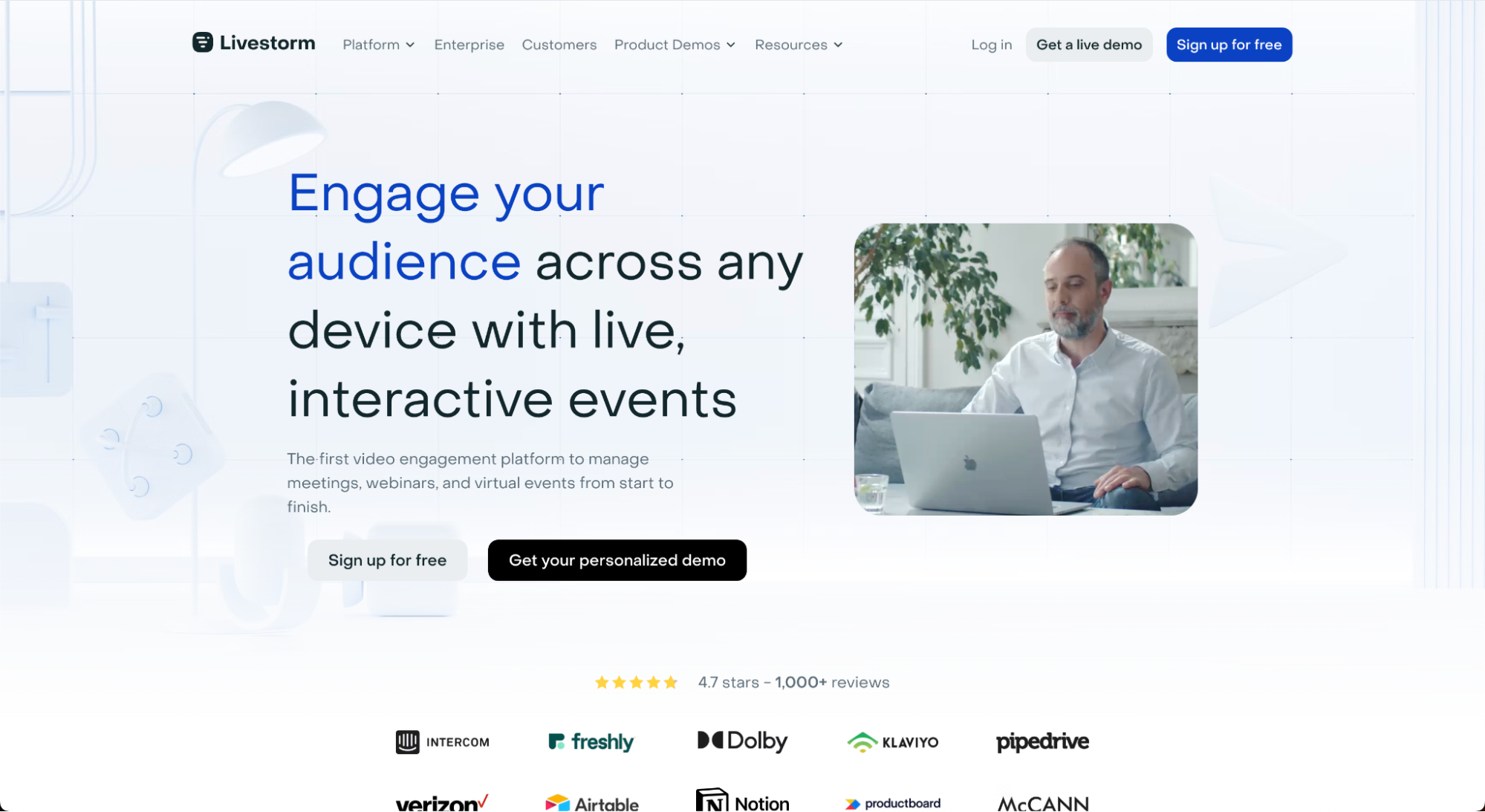
Making these changes has improved homepage conversions by 30% and enabled the team to sell more deals at a higher price point.


